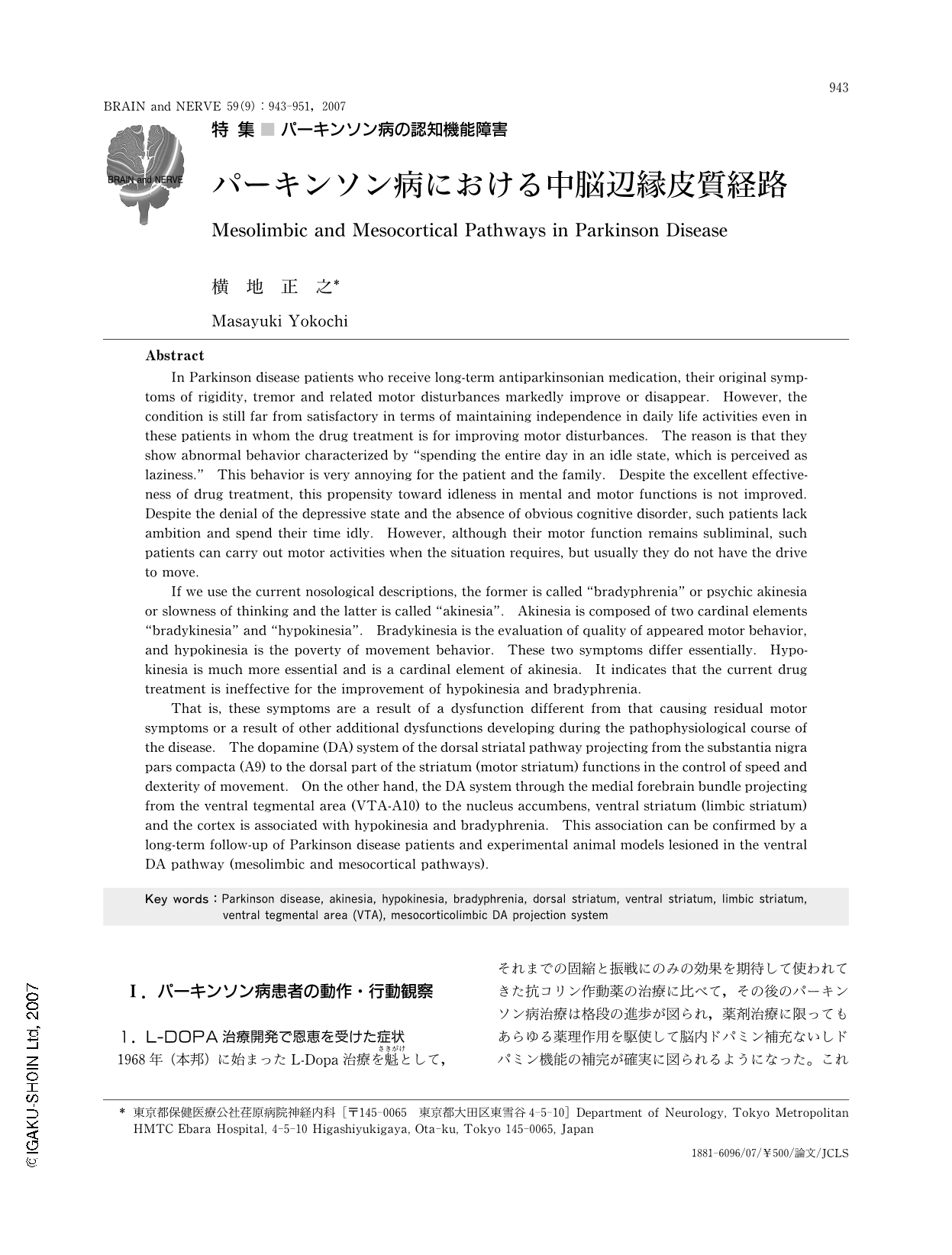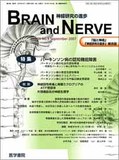Japanese
English
- 有料閲覧
- Abstract 文献概要
- 1ページ目 Look Inside
- 参考文献 Reference
Ⅰ.パーキンソン病患者の動作・行動観察
1.L-DOPA治療開発で恩恵を受けた症状
1968年(本邦)に始まったL-Dopa治療を魁として,それまでの固縮と振戦にのみの効果を期待して使われてきた抗コリン作動薬の治療に比べて,その後のパーキンソン病治療は格段の進歩が図られ,薬剤治療に限ってもあらゆる薬理作用を駆使して脳内ドパミン補充ないしドパミン機能の補完が確実に図られるようになった。これによって患者は相当の運動機能の補償がなされ,長く日常生活を維持することができるようになった。同時にドパミン系作用薬剤治療の経験は,パーキンソン病の症候理解と大脳基底核機能の理解に大きな示唆を与えたことが特筆されよう。
有効な治療のおかげで,われわれは既にパーキンソン病病態の自然史をみる機会を失ったが,経過とともに顕在化する筋強剛(固縮)とこれに伴う関節硬縮,およびJames Parkinsonが原著1)で強調した,末期まで執拗に患者を苦しめる振戦とこれらに伴う運動障害などは,的確な治療の下では確実に軽減され,これらの徴候は長期治療例の多くでほとんど消退する。
Abstract
In Parkinson disease patients who receive long-term antiparkinsonian medication, their original symptoms of rigidity, tremor and related motor disturbances markedly improve or disappear. However, the condition is still far from satisfactory in terms of maintaining independence in daily life activities even in these patients in whom the drug treatment is for improving motor disturbances. The reason is that they show abnormal behavior characterized by "spending the entire day in an idle state, which is perceived as laziness." This behavior is very annoying for the patient and the family. Despite the excellent effectiveness of drug treatment, this propensity toward idleness in mental and motor functions is not improved. Despite the denial of the depressive state and the absence of obvious cognitive disorder, such patients lack ambition and spend their time idly. However, although their motor function remains subliminal, such patients can carry out motor activities when the situation requires, but usually they do not have the drive to move.
If we use the current nosological descriptions, the former is called "bradyphrenia" or psychic akinesia or slowness of thinking and the latter is called "akinesia". Akinesia is composed of two cardinal elements "bradykinesia" and "hypokinesia". Bradykinesia is the evaluation of quality of appeared motor behavior, and hypokinesia is the poverty of movement behavior. These two symptoms differ essentially. Hypokinesia is much more essential and is a cardinal element of akinesia. It indicates that the current drug treatment is ineffective for the improvement of hypokinesia and bradyphrenia.
That is, these symptoms are a result of a dysfunction different from that causing residual motor symptoms or a result of other additional dysfunctions developing during the pathophysiological course of the disease. The dopamine (DA) system of the dorsal striatal pathway projecting from the substantia nigra pars compacta (A9) to the dorsal part of the striatum (motor striatum) functions in the control of speed and dexterity of movement. On the other hand, the DA system through the medial forebrain bundle projecting from the ventral tegmental area (VTA-A10) to the nucleus accumbens, ventral striatum (limbic striatum) and the cortex is associated with hypokinesia and bradyphrenia. This association can be confirmed by a long-term follow-up of Parkinson disease patients and experimental animal models lesioned in the ventral DA pathway (mesolimbic and mesocortical pathways).

Copyright © 2007, Igaku-Shoin Ltd. All rights reserved.


